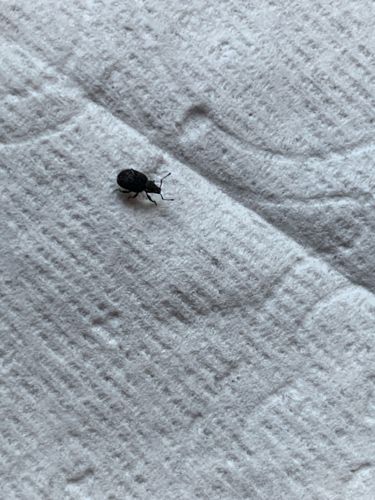Black Vine Weevil
Scientific Name: Otiorhynchus sulcatus
Order & Family: Order: Coleoptera, Family: Curculionidae
Size: Adults typically range from 7 to 10 mm (0.28 to 0.40 inches) in length.

Natural Habitat
Found in gardens, nurseries, greenhouses, and woodlands, often in temperate regions worldwide. They prefer host plants like rhododendrons, azaleas, cyclamens, camellias, and many other woody and herbaceous plants.
Diet & Feeding
Larvae feed on roots of a wide range of plants, including ornamentals, fruits (e.g., strawberries, raspberries, grapes), and nursery stock. Adults primarily feed on the leaves, creating characteristic notch-like feeding patterns on the edges of leaves.
Behavior Patterns
The Black Vine Weevil larvae are C-shaped, legless, and white, living in the soil where they feed on plant roots. Adults are nocturnal, feeding on plant foliage and host plants. They are primarily active during warmer months. Females can reproduce parthenogenetically (without males), which contributes to their reproductive success and invasive nature.
Risks & Benefits
Potential risks include significant damage to host plants, especially container-grown plants, leading to wilting, stunted growth, and even plant death as a result of root damage by larvae. Adult feeding also causes aesthetic damage to leaves. They are considered a serious pest in horticulture. There are no known direct benefits.
Identified on: 8/30/2025